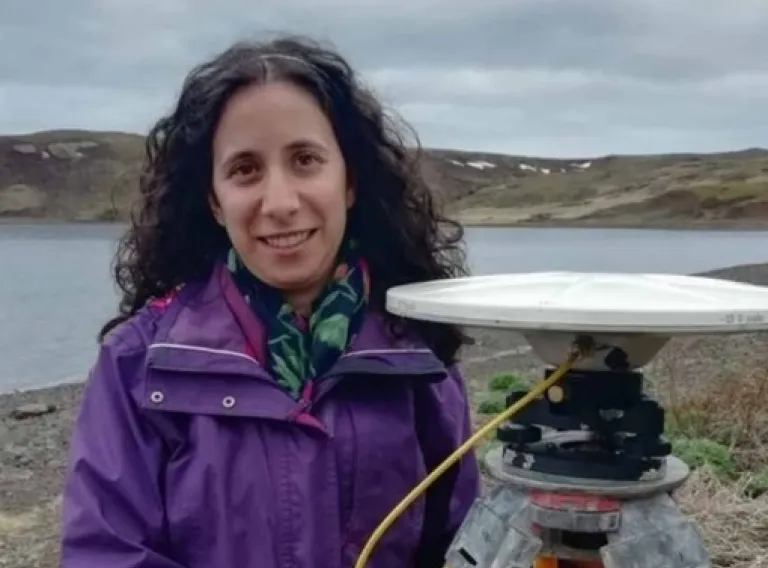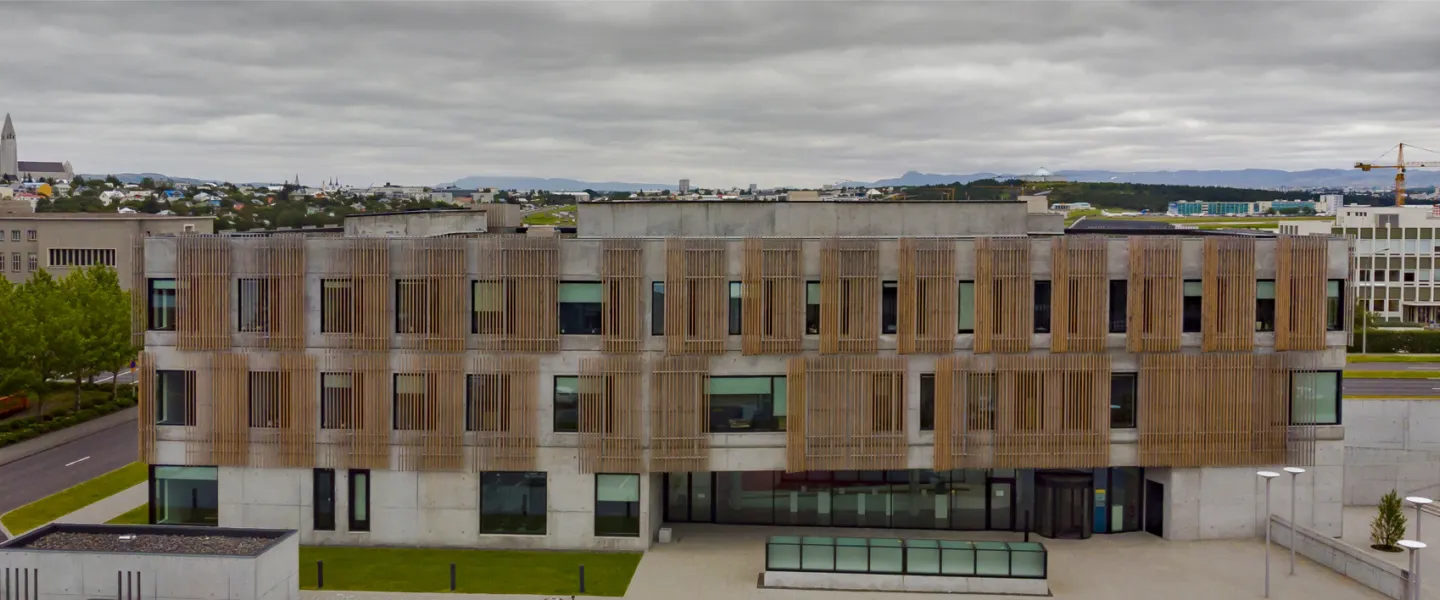Aðalbygging
The Aula
Doctoral candidate: Chiara Lanzi
Title of thesis: Improving modelling of crustal deformation in relation to magmatic and geothermal processes
Opponents:
Dr. Alessandro Bonforte, Researcher at the National Institute of Geophysics and Volcanology, at the Etna Volcano Observatory in Catania, Italy
Dr. Emily Montgomery-Brown, Research Geophysicist and Volcano deformation specialist, Cascades Volcano Observatory, U.S. Geological Survey, USA
Advisor: Dr Freysteinn Sigmundsson, Research Professor at the Institute of Earth Sciences, University of Iceland
Other members of the doctoral committee:
Dr. Halldór Geirsson, Professor at the Faculty of Earth Sciences, University of Iceland
Dr. Michelle Parks, Specialist in volcano deformation and monitoring, Icelandic Meteorological Office
Dr. Vincent Drouin, Specialist in ground movements and InSAR measurements with radar satellites, Icelandic Meteorological Office
Chair of Ceremony:
Dr. Andri Stefánsson, Professor and Head of the Faculty of Earth Sciences, University of Iceland
Abstract
Understanding small crustal deformation signals is important for improving volcano monitoring and hazard mitigation. Spatial and temporal ground displacement patterns were mapped with Global Navigation Satellite System (GNSS) geodesy and Interferometric analysis of Synthetic Aperture Radar (InSAR) images, allowing detection of millimeter- to centimeter-scale deformation. Geodetic modelling, through inversion or forward modelling, was used to infer deformation source parameters and increase understanding of volcanic, geothermal and tectonic processes.
In summer 2018, a change in the pattern of ground deformation at the Krafla caldera coincided with increased pressure in a monitoring well. This occurred at a similar time as re-injection of water, in relation to geothermal utilization, was modified. The difference between GNSS and InSAR velocity fields from 2015–2018 and 2018–2020 reveals an inflation pattern with horizontal motion up to 8–10 mm/yr.
Geodetic inversion shows that the difference velocity field can be fit with a 2.1–2.5 km deep point-source, near the magma-hydrothermal interface. The observations are broadly explained by local variations in intra-caldera crustal elasticity and pressure increase at ~2.2 km depth, consistent with the well data.
The study also examined how local elastic and viscoelastic crustal and mantle properties at volcanoes located at divergent plate boundaries influence deformation from regional processes like plate spreading, using a Finite Element Method model to simulate local rheological anomalies beneath calderas and rifts. This approach helps explaining the observed decades-long subsidence at Krafla (1989–2018) and Askja (1985–2021).
The results show that extensional forces and rheological anomalies can drive volcanic subsidence. At Krafla, this account for much of observed 2015-2018 subsidence, but only 20–30% at Askja. Finally, the ~40-60 mm subsidence during the 2021 Fagradalsfjall eruption was analyzed and evaluated how changes in deformation relate to changes in eruption rate, geochemistry of eruptive products, and eruptive style. Surface lava loading within 1-2 km significantly contributed to the subsidence. After removing this effect, geodetic inversion locates a 12–14 km deep sill source with volume contraction of 21-27 Mm3. This research highlights the need to consider complex geological settings when interpreting small ground deformation signals, as multiple interacting processes may produce observed deformation.
About the doctoral candidate
Chiara Lanzi was born in 1994 in Alatri in Italy and grew up in the nearby town of Torre Cajetani. She completed her undergraduate studies at the University of Rome, La Sapienza, in 2016, where she received a BSc in Geology. She continued her studies at La Sapienza in the Exploration Geology MSc program and completed it in March 2019.
Chiara began her doctoral studies at the University of Iceland in the fall of 2019, and she has been working as a specialist in volcano deformation at the Icelandic Meteorological Office since October 2024.

Share
Buses 14, 1, 6, 3 and 12 stop at the University of Iceland in Vatnsmýri. Buses 11 and 15 also stop nearby. Let's travel in an ecological way!
